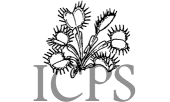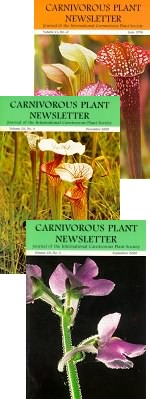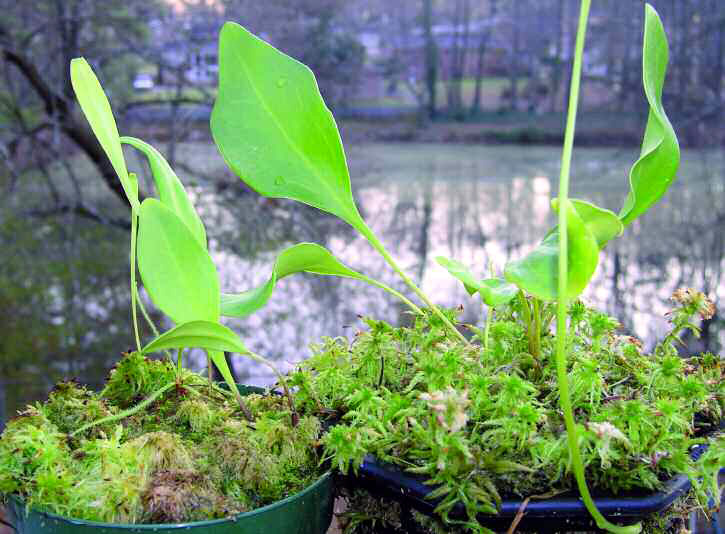
|
| Cultivar Registrations in CPN |
|
Carnivorous Plant Newsletter New Cultivars Keywords: cultivar: Utricularia alpina ‘Pittier Moon’. Utricularia alpina ‘Pittier Moon’
Submitted: 17 January 2007 Gert Hoogenstrijd and I grow a large number of species from the Utricularia section Orchidioides, which are referred to collectively as the “epiphytic” species. One of the plants we grow is a clone of Utricularia alpina of uncertain provenance (but which is purported to have originally come from Henry Pittier National Park).We have grown and distributed this clone for a few years under the informal name “Henry Pittier clone #1” and we feel that its excellent attributes and unique nature merit cultivar status. After a brief discussion, on Dec, 12th 2006 my co-author and I chose to give this plant the cultivar name Utricularia ‘Pittier Moon’. Since this plant has previously been distributed as “Henry Pittier clone #1” we felt it was important to keep the name familiar to those who already have this plant so we have chosen to retain the “Pittier” epithet of the name. The large, white showiness of the blooms evokes thoughts of the full moon, hence the second, descriptive portion of our name. This plant is significantly more robust when compared to the more typical forms of U. alpina found in cultivation (see Figure 1) and has occasionally been referred to by horticulturists as a “giant” or “large” form. The leaves are large—typically 20-45 cm long and 4-8 cm wide. This is 2-6 times the size of typical clones in cultivation, which for us are 8-20 cm long and 1.5-4 cm wide. They are also quite thick and almost succulent in texture. In outline they are diamond-shaped with a distinct petiole. Likewise, the blooms of this plant are 1.5-2.5 times larger than those of typical clones (see Figure 2). Flowers are typically born 2-4 on an inflorescence and, other than their large size, are typical for the species. While this plant does produce viable seed from self-pollinated blooms it is not currently known whether the plants attained from these seed will display the same robust characters and as such only plants propagated by vegetative means should retain the cultivar name. Therefore, seed produced by this plant should be labeled and distributed as nothing more than U. alpina. Utricularia ‘Pittier Moon’ is not the only large form of U. alpina in cultivation, for example there is a plant in cultivation frequently labeled “Henry Pittier clone #2”; this is a different plant that has extremely long inflorescences and small flowers.While noteworthy, this and other large clones of U. alpina do not necessarily have the same character details. —TRAVIS H. WYMAN AND GERT HOOGENSTRIJD • Stone Mountain, GA • USA •
Figure 1: Foliage of normal clone of U. alpina from Atlanta Botanical Garden (left) compared to U. alpina ‘Pittier Moon’ (right). Photograph by Travis H. Wyman.
Figure 2: Flower of normal clone of U. alpina from Atlanta Botanical Garden (left) compared to U. alpina ‘Pittier Moon’ (right). Photograph by Travis H. Wyman. |
This page is maintained by Robert Ziemer, |



